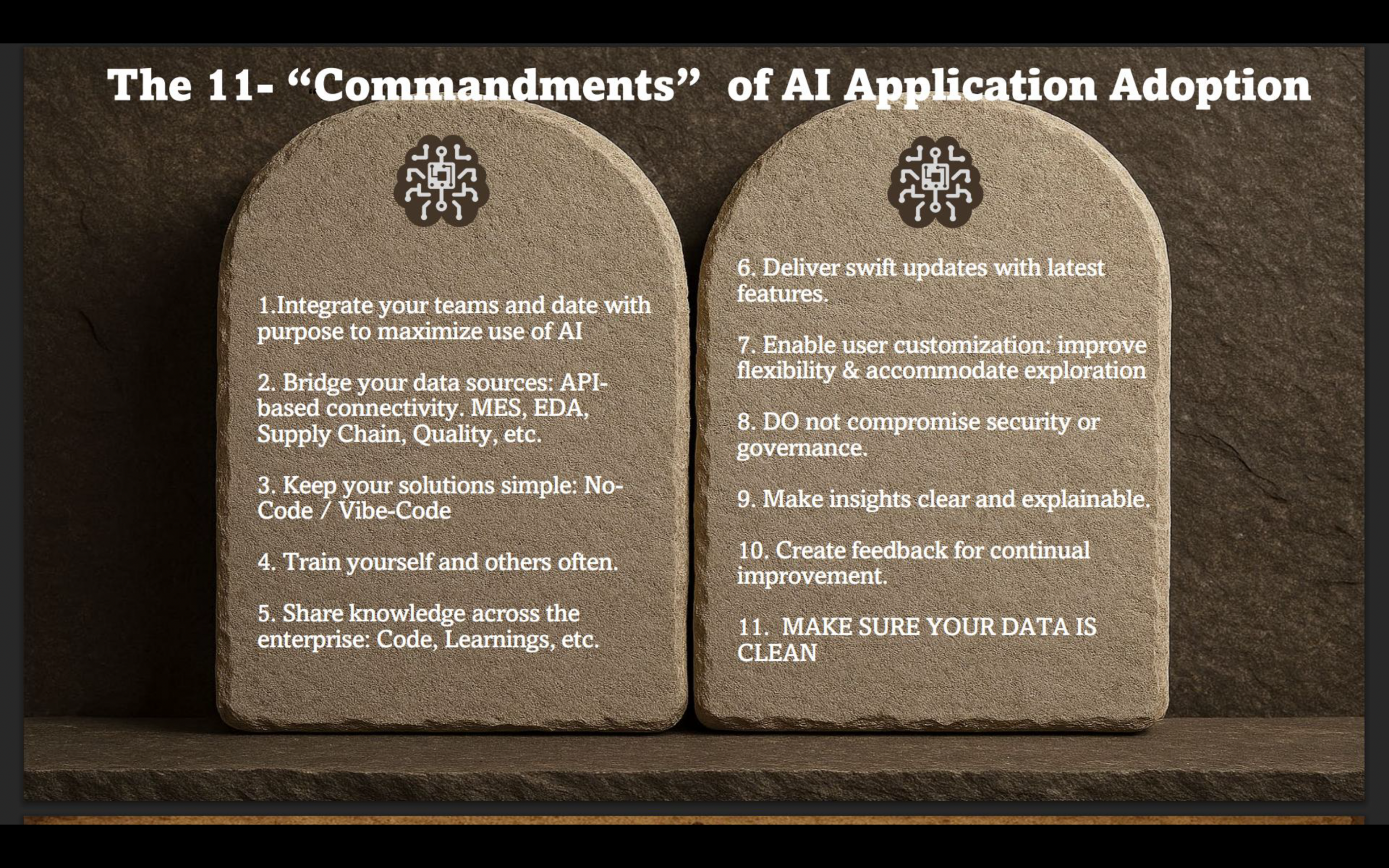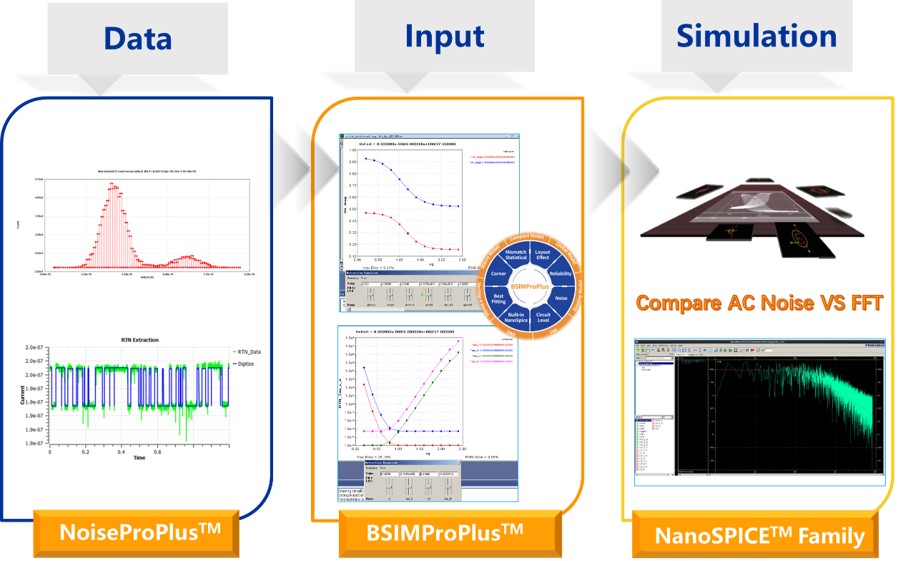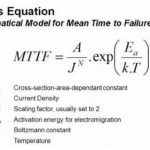FinFET processes provide power, performance, and area benefits over planar technologies. Yet, a vexing problem aggravated by FinFET’s is the greater local device current density, which translates to an increased concern for signal and power rail metal electromigration reliability failures. There is a critical secondary… Read More
 PDF Solutions' AI-Driven Collaboration & Smarter DecisionsWhen most people hear the term PDF, they…Read More
PDF Solutions' AI-Driven Collaboration & Smarter DecisionsWhen most people hear the term PDF, they…Read More Bringing Low-Frequency Noise into FocusKey takeaways The challenge of acquiring high-quality, reproducible…Read More
Bringing Low-Frequency Noise into FocusKey takeaways The challenge of acquiring high-quality, reproducible…Read More A Brief History of TSMC Through 2025Taiwan Semiconductor Manufacturing Company, the world's largest dedicated…Read More
A Brief History of TSMC Through 2025Taiwan Semiconductor Manufacturing Company, the world's largest dedicated…Read More Google's Road Trip to RISC-V at Warehouse Scale: Insights from Google's Martin DixonIn a engaging presentation at a recent RISC-V…Read More
Google's Road Trip to RISC-V at Warehouse Scale: Insights from Google's Martin DixonIn a engaging presentation at a recent RISC-V…Read More Bridging Embedded and Cloud Worlds: AWS Solutions for RISC-V DevelopmentIn a compelling keynote at the RISC-V Summit…Read More
Bridging Embedded and Cloud Worlds: AWS Solutions for RISC-V DevelopmentIn a compelling keynote at the RISC-V Summit…Read MoreSEMI SMC: Atoms Still Don’t Scale
Last Tuesday was the SEMI’s annual Strategic Materials Conference (SMC). The opening keynotes were given by Gary Patton, the CTO of GlobalFoundries, and Mark Thirsk, Managing Partner of Linx Consulting. This year it was held in the Computer History Museum (which always makes the commute interesting since you have to fight… Read More
Why Sidense OTP is Like the Armored Car of NVM
I have written about Sidense before, but last week at the TSMC Open Innovation Platform Forum, I had a chance to hear a talk by, and have lunch with Betina Hold Director of R&D at Sidense. Here is what I learned.
Sidense has been focusing on the growing market in what they like to call the smart connected universe. It is best to think… Read More
Krivi Specialty I/O Library Support UMC 28nm
There is an industry consensus about 28nm, the technology node is here to stay, and to stay for very long. If we except 20nm node, which by opposition will have a very short lifetime, 28nm is the last node following the economic part of Moore’s law: designing on smaller technology allows building cheaper IC when you integrate the same… Read More
How GlobalFoundries’ CTO Nearly Became a Lawyer…Called Funkhauser
I sat down for a chat with Gary Patton, the CTO of GlobalFoundries, at today’s SEMI Strategic Materials Conference where he had just given one of the keynotes (which I’ll cover another time). His family name isn’t really Patton, his grandfather’s name was Funkhauser, but his step-grandfather’s… Read More
Enterprise Design Management Comes of Age
The motivations for having a data and process management system in place for semiconductor design have existed for a long time. I am reluctant to admit it, but I remember early efforts to do this back in the 80’s at Valid Logic. Cadence was also developing this capability in house through the early 90’s. Back then designs were much … Read More
New Sensing Scheme for OTP Memories
Last week at TSMC’s OIP symposium, Jen-Tai Hsu, Kilopass’s VP R&D, presented A New Solution to Sensing Scheme Issues Revealed.
See also Jen-Tai Hsu Joins Kilopass and Looks to the Future of Memories
He started with giving some statistics about Kilopass:
- 50+ employees
- 10X growth 2008 to 1015
- over 80 patents (including
The Cost Challenge has Been Met – Let the Disruption Begin!
Displacing the Silicon Power MOSFET with eGaN® FETs
35 years ago the silicon power MOSFET was a disruptive technology that displaced the bipolar transistor – and a $12B market emerged. The dynamics of this transition taught us that there are four key factors controlling the adoption rate of a new power conversion technology:
- Does
Dialog and Atmel, 2 cultures to build 1 successful company ?
Consolidation is on-going in semi industry, as we learn that Dialog Semi just announced the acquisition of Atmel. Is it a good news for Atmel, or for Dialog ? Apparently not for the stock market, as Dialog stock went down by 20% within the last few hours… But we can try to look more in-depth at the potential synergy between these two companies’s… Read More
The Paradox of Atmel No More
Technology pundits said Atmel is one of the best-positioned companies in the Internet of Things (IoT) realm, if not the best IoT company outright. The San Jose, California–based chipmaker boasts an enormous portfolio of microcontrollers and a deep expertise in security and automotive electronics hardware. Yet its underperforming… Read More




Quantum Computing Technologies and Challenges